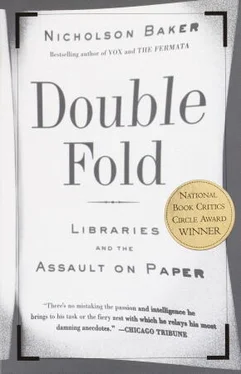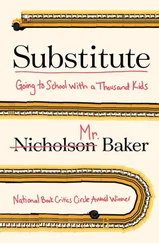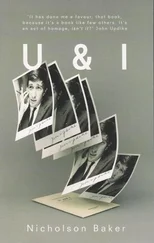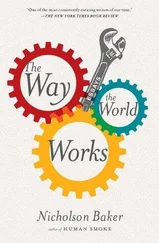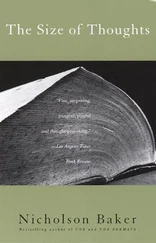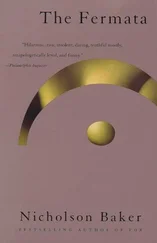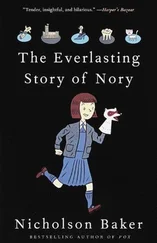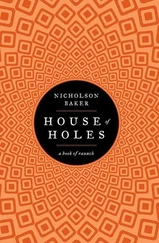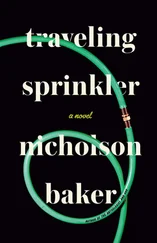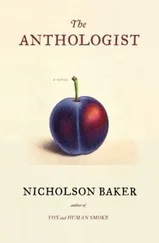Microfilm had an air of enticing sneakiness as well — of important covert operations performed in the national interest. This tradition goes back to the siege of Paris 15in 1870, when the Prussians cut all telegraph links to the city. In a peasant’s disguise, René Patrice Dagron, already a microphotographer of note, snuck his optical apparatus to Tours in wine barrels, and there photographed military communiqués at reduced size on emulsions that he gently rolled up, slid into quills, and affixed to carrier pigeons. The birds, which had been plunging exhausted from the sky when burdened with heavy paper, now flapped to Paris without incident.
In World War II, microfilm again came to prominence. Eugene Power, 16the founder of University Microfilms, landed a big contract in 1942 with the Office of Strategic Services, later to become the CIA, to film millions of pages of German scientific papers and other documents gathered by British agents. Around the same time, the OSS needed an efficient way to sort thousands of vacation photographs of Germany that the military had solicited from the public in order to plan bombing runs. A forward-thinker named John F. Langan hired a team of women to mount microfilm snippets of each vacation photo (along with selected stills from Axis newsreels) into a rectangular hole cut in an IBM punch card that was coded to correspond to the subject of the photo. In The Hole in the Card (a company history published in 1966 by 3M’s Filmsort subsidiary), Neil MacKay 17writes, “For example, if a request were received for a shot of a bridge in occupied France that the allies wanted blown up, the cards were mechanically sorted at high speed to segregate all ‘bridge’ cards. The film in the cards was then projected on a screen to select the exact shot wanted.”
Langan was helped by another early bird, Vernon D. Tate, 18who moved to the OSS from the National Archives, where in the thirties he had supervised the filming and destruction of a boatload of primary sources. Tate wrote in 1942 that microfilm “ranks in importance with any secret military weapon 19thus far disclosed.” One of its greatest advantages was the ease with which it could be destroyed, according to Tate:
Books may not be blown to bits or easily burned by fire; microfilms if capture is inevitable can be rapidly and completely consumed, and as easily replaced through the making of prints from master negatives.
Tate went on to become MIT’s head librarian.
After the war, the most influential microfilm booster was a polymathic, bow-tie-wearing career librarian named Verner Clapp. Clapp became the number-two man at the Library of Congress under Luther Evans (“We’re going places Verner,” 20Evans wrote him in 1945, “and I’m very glad you’re a good sailor”); after narrowly missing the chieftaincy 21himself, Clapp went on in 1956 to direct the new and very flush Council on Library Resources, which bestowed hundreds of thousands of Ford Foundation dollars on technologies of image shrinkage. In 1958, Clapp chaired a meeting on “Problems of Microform in Libraries” at the Cosmos Club in Washington; the first item on the agenda was “Reduction in bulk 22—the problems of library storage.” One of Verner Clapp’s cherished bulk-reducing projects was the “Verac,” built by AVCO Corporation (they were at work on the reentry system for the Minuteman missile 23at the time) — a cubic-foot set of stacked photographic plates layered with super-high-resolution “Lippman emulsion,” which could hold a million page-images, each accessed by a servomechanism that, as Clapp put it, “brings the addressed image into the scanning position through a paroxysmic effort of approximately one-tenth of a second’s duration.” The Verac could make you a hard copy (Clapp uses this Cold War term in 1964), with the help of a Printapix tube, or the image could be made to appear on a “vidicon,” or closed-circuit-TV screen. It didn’t work, though — the words were blurry. Or perhaps the blur accurately reproduces Clapp’s own tears of frustration, for the paroxysmic Verac was an expensive failure. Like missile defense, leading-edge library automation is a money pit.
At the 1959 annual meeting of the National Microfilm Association, Clapp gave the keynote address, entitled “A Good Beginning.” 24He spoke of a hoped-for day in which microfilm machines “can be made a personal accoutrement, as homely and as natural and as essential as the tooth-brush, the ball-point pen, or as eyeglasses.” He also told delegates that microfilm “has come to the forefront again and again in time of war, and some of its best-known achievements are associated with espionage.” Most of his listeners that day were unaware that Clapp himself was, at the time, a consultant for the CIA, and that since at least 1949, while he was still at the Library of Congress, he had been an official intelligence contact with top-secret clearance. Clapp’s CIA file includes “Report of Liaison” forms from 1953 and 1954 which state that his task was to “maintain liaison on mutual library matters as well as monitor certain CIA-financed Library of Congress activity.”
What that activity was precisely is hidden behind a censor’s busy Magic Marker; some of it probably concerned the contract microfilming of classified documents. In Clapp’s handwritten daily minutes, now held at the Library of Congress’s manuscripts division, there is a note from November 1951, when he was chief assistant librarian—“Round up on CIA projects,” followed by a list of names, 25including Frederick Wagman (a lifelong microfilm enthusiast, later director of the University of Michigan’s library and president of the American Library Association) and John W. Cronin, the Library of Congress’s head of processing and member of the American Library Association’s committee on cooperative microfilming projects. Around the same time, Clapp notes that he’s gotten word from Alexander Toth, the CIA’s librarian, that the “CIA contract is in mill.”
All Clapp’s notes are on paper, easily read today. Clapp’s CIA file, on the other hand, is an unfortunate victim of the Cold War mania 26for micro-preservation: it looks to have been inexpertly filmed at some point, and it has undergone a severe fading, as microfilm does when technicians don’t take care to rinse off the hypo fixative. The copy that the CIA sent me is poignantly stamped with the words BEST COPY AVAILABLE 27on almost every nearly indecipherable page. Some of the pages are, though uncensored, completely unreadable. The same cautionary language — BEST COPY AVAILABLE — accompanies the printouts from microfilmed newspapers that one can order from the Library of Congress and the New York Public Library.
There was a palpable glamour to microfilming in those early days, difficult though it may be to feel it now — a hot chemical whiff of cinematography and of high-stakes intelligence work. And there was, as well, the entrepreneurial appeal of creating a product you could sell to other libraries, and the further compensations that flowed from selling your master negatives and reproduction rights to commercial microfilm companies such as University Microfilms, as most libraries that possessed early homegrown film eventually did.
But the main reason microfilm (and its rectangular, lower-resolution cousin, microfiche) has always fascinated library administrators is, of course, that it gives them a way to clear the shelves — to “expand without expanding,” in the words of a full-page Xerox-UMI advertisement in the July 1976 issue of Microform Review. The picture in the ad is of a squeezed, feather-shedding American eagle; the headline is AMERICA’S SPACE PROGRAM IS IN TROUBLE: 28
We don’t have enough of it. Space. Not in the cities. Not on the land, and, as we don’t need to tell you, not in the libraries. University Microfilms can give you more space. More space translates as more ways to expand without expanding, more options open.
Читать дальше
